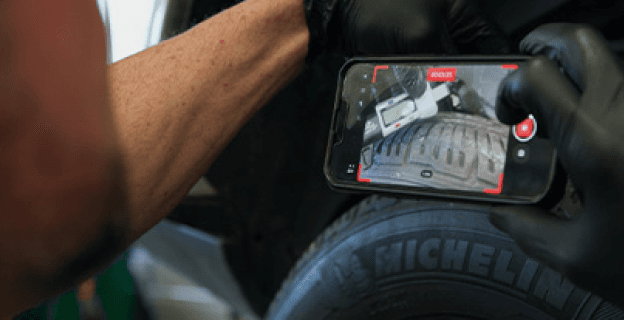4 Min Read • June 3, 2024
How To Use Video in Your Service Department

Video has been used by truck dealerships as a marketing tool for many years, but there’s so much more that this format can do for your business.
Many dealers have videos of their vehicle inventory or facilities so prospective customers can get an overview of the capabilities available at the location.
More recently, video found its way into dealership Service departments but not as a promotional tool. Instead, videos can show rather than tell customers exactly what’s wrong with their trucks.
Vehicle owners and the people who repair them may not always be aligned when it comes to trust. This is true for owners of automobiles and also for truck owners. Often when a truck comes in for service, the technician will find additional repairs that should be made or collateral damage from the failure that initially brought the truck into the shop. In addition, during regularly scheduled preventive maintenance inspections and service, technicians may discover a developing problem. That issue needs to be rectified.
It's one thing to describe and annotate the problem so that the Fleet Manager can decide on whether to authorize the repair. It’s quite another for the technician to be able to document the damage and then share it with the customer who can see for themselves what the issue is. Savvy dealerships have their technicians send videos to customers pointing out exactly what needs to be repaired.
The Benefits of Video
Once the customer receives the video — typically sent as a text message or an email link — they can see the problem for themselves. Dealers who use video during service events find that customers who see the problem may be more likely to authorize repairs. In addition, those authorizations come quickly, meaning the truck often doesn’t have to be pulled out of the Service bay, and the technician can begin the repair immediately. Video allows the Fleet Operator to feel more confident in decision making. If you send the video via text, it also allows the fleet to quickly communicate directly with the technician.
Dealers also have indicated an increase in dollars per repair order when fleets are sent video because fleets are less likely to decline service once they‘ve seen the problem for themselves.
Video evidence of a needed repair also helps build trust between the fleet and the service provider. When the technician who’s working on the truck makes the video, it can help build deeper relationships across the dealership.
Another benefit of using video is that customers may be more satisfied with their experience at the dealership. According to CDK, which offers ServiceView — a video/texting platform — customer satisfaction scores are 10% to 30% higher when a dealership uses video and texting in their Service department. This often translates to repeat business and referrals.
Some Practical Tips
One key advantage to recording a vehicle when it’s in the shop is that no special equipment is needed. Technicians can use their smartphones or tablets to document the needed repair.
Everyone understands that a Service bay isn’t the ideal place to make a video but there are things technicians can do to ensure the video is of good-enough quality.
- Make sure the camera is at eye level.
- Thoroughly inspect the vehicle before recording the video so the technician will be prepared to point out systems that are operating properly and where the problems are.
- If there isn’t inadequate light in the bay, the technician may need to add some.
- If there’s a window in the bay, the technician should shoot the video facing the window. Avoid shooting with a window behind you.
- Use a flashlight or pointer tool to help illuminate areas of special concern.
- In most cases, it should be possible to use the device's built-in microphone. If the shop is exceptionally noisy, consider a lavalier or other type of external microphone plugged into or paired with the device.
- The technician should begin the video by introducing themselves.
- Record the license plate or some other vehicle identifier, so the customer knows it’s actually their truck that’s being recorded and that there’s no deception.
- The technician should reiterate why the truck is in for service.
- Speaking slowly and clearly, the technician should talk about the things on the vehicle that are working properly. This reassures the fleet that the technician has done a thorough inspection.
- The technician should speak with authority but not too casually. When it comes to trucks, the technician should assume a relatively high level of knowledge from the intended audience but certainly not mastery.
- Focus on the problem, explain exactly what’s wrong, and point the camera toward the worn or damaged parts.
- The technician also can comment on any manufacturer-recommended maintenance that’s due.
To make sure technicians are comfortable recording and narrating videos, offer a quick training for those technicians who aren’t familiar with shooting a video. Service Advisors and department managers can be asked to shoot videos in those cases where technicians can’t be persuaded to do so.
If you aren’t already using videos to document repairs, consider making a change and watch approval times decrease and authorizations increase.
Share This













































